Top 4 Takeaways from Concerning New State Report on Teacher Pipeline You Need to Know About
September 13, 2023
September 13, 2023
We all want our public schools to be places where our kids have fully qualified and effective educators in every classroom. Yet, according to a new report by the nonpartisan Joint Legislative Audit and Review Commission (JLARC), for too many Virginia students this year, staffing shortages and not fully qualified instructors are an increasing challenge. The report lays out several recommendations and policy options for decision-makers to mitigate our teacher shortages and promote pathways to produce the most effective educators possible. Below are 4 takeaways from the new report.
While many other states are seeing improvements in their teacher vacancy numbers, shortages are looking significantly worse in Virginia for the current school year – increasing from 3.9% to 4.8% in the 2023-24 school year.
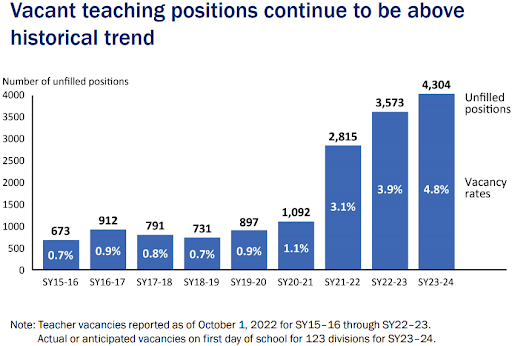
Source: JLARC Report
And while we’ve had more teachers leaving the profession in Virginia than entering over the past decade, the problem has gotten significantly worse in recent years as real pay has declined and attacks on teachers from opportunistic politicians seeking to stoke culture wars have increased.
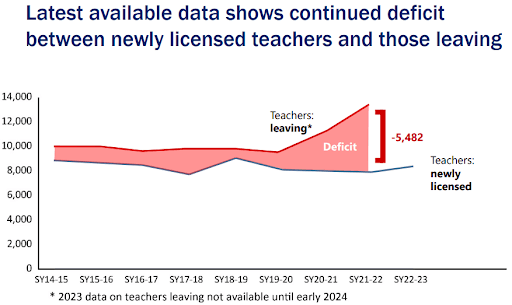
Source: JLARC Report
When JLARC asked licensed teachers who were not teaching in the state what it would take to get them back in the classroom, better pay was the top issue. Virginia continues to have the third least competitive teacher pay out of all states when you compare it to average pay other professionals in the state make with a similar level of education.
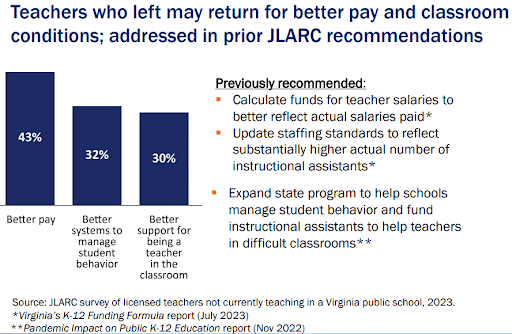
Source: JLARC Report
While top administration appointees came on after the JLARC presentation of the report to celebrate what the state has done to increase teacher pay in recent years, a simple inflation adjustment reveals that average teacher pay in the state is down thousands of dollars from pre-pandemic pay level – this is nothing for the Governor’s administration to brag about. The administration and Republicans in the House pushed for hundreds of millions of dollars less to go to K-12 schools in the state budget in order to pay for large tax cuts for corporations and wealthy individuals. While there was a massive state surplus on hand, a small fraction of which could have been used to get Virginia teacher pay to the national average, they chose to push for tax giveaways instead.
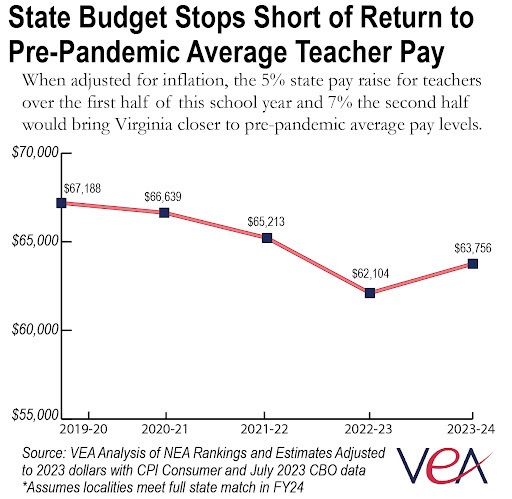
The state has far more provisionally licensed teachers in Virginia classrooms, which research and surveyed school leaders find to be significantly less effective than teachers who are fully trained and come from traditional teacher preparation programs.
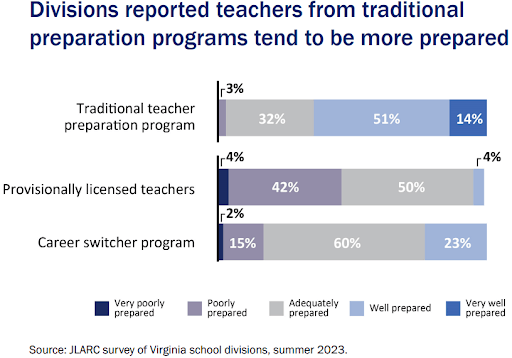
Source: JLARC Report
VEA analysis shows that provisionally licensed teachers in Virginia are more likely to teach in schools with the highest vacancy rates and a higher share of students who traditionally face more barriers to learning. The current administration has focused on creating easier pathways for people to gain provisional licensure, rather than investing in competitive teacher pay and high-quality residency programs to attract fully trained teachers to the classroom.
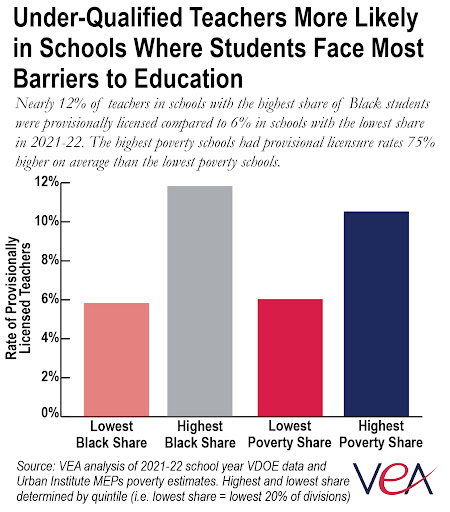
The vast majority of new teachers in Virginia come from traditional preparation programs each year, while a small number – fewer than 100 – come from residency and apprenticeship programs. VEA has long argued that the state can and should do more to support residency programs that allow teachers to gain more classroom experience and have all or part of their tuition covered if they teach in high-need content areas or schools for a certain period of time after graduation. JLARC finds these programs are rigorous and highly effective. State lawmakers should take note and double down on investment in these programs over the coming years.
In addition, JLARC noted Virginia could be doing much more to cover tuition for low-income students to enter traditional teacher preparation programs and teach in high-need schools or content areas after graduation. They noted that our neighbors to the north and south, North Carolina and Maryland, invest significantly more in tuition reimbursement programs for teachers.
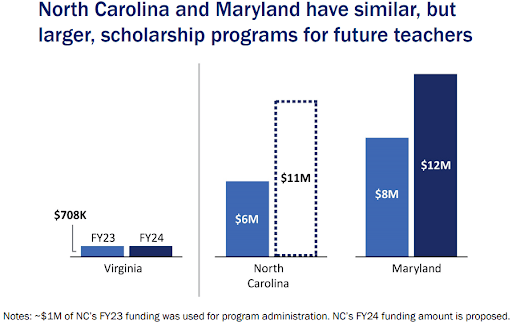
We’ve known for years that Virginia severely underpays its teachers and now our teacher pipeline and shortage challenges are getting significantly worse while most other states remain stagnant or are seeing improvements. While residency programs are promising, and there is always room for incremental improvements in school management strategies, non-competitive pay and under-investment in school supports are the main drivers of our teacher shortages. We can’t seriously address our teacher shortages without bold funding solutions. If we care about having highly qualified teachers in all of our classrooms, we can’t get distracted and only focus on the relatively small-scale recommendations in this JLARC report. Ultimately, we need our leaders to put their money where their mouths are to change our dire teacher pipeline trajectory and attract a new generation of fully trained educators to our classrooms.
Teacher shortages are a serious issue across the country. Here in Virginia, there are currently over 3,648 unfilled teaching positions. (FY23)
Learn More